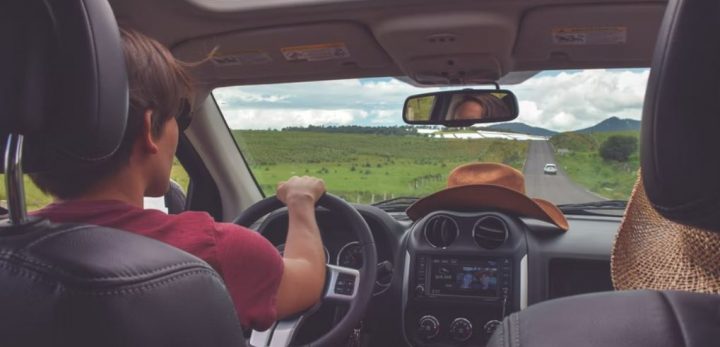Driving can give you a pain when and where you least expect it and holiday driving with added pressures of family and finding your way through heavy traffic can bring on cramps and pains, which can be reduced with a bit of preparation.
The good news is that there are many ways to alleviate the physical effects of driving. Auto Trader recommends making a number of simple changes to see a bigger difference – from adjusting your seat position to parking further away in order to get extra steps and mobility in.
Simple car adjustments for improved posture:
- Seat positioning: Adjust the seat so that your feet can comfortably reach the pedals with a slight bend in your knees. Your knees should be lower or level with your hips and your arms should be slightly bent at the elbows when holding the steering wheel.
- Seat height: Your hips should be slightly higher than your knees to reduce pressure on the lower back. As a rough guide, ensure there’s at least a fist-width space between your head and the car roof.
- Seat angle: To reduce pressure on your lower back, tilt the seat back slightly so it’s positioned around 100-110 degrees. Avoid reclining too far as this can create a natural slouching shape which will add strain to your neck and shoulders.
- Lumbar support: Lots of cars on Auto Trader’s website come with adjustable lumbar support, which you can adapt to the natural curve of your lower back. But if you don’t have this, you can purchase a lumbar cushion, or a rolled-up towel placed at the small of your back to help prevent slouching.
Physio-Recommended Stretches To Help Your Driving Posture
 If you notice that your posture is deteriorating or find you’re uncomfortable when driving, Sammy Margo (above), of Smartphysio, says you can easily combat these early signs with simple daily exercises.
If you notice that your posture is deteriorating or find you’re uncomfortable when driving, Sammy Margo (above), of Smartphysio, says you can easily combat these early signs with simple daily exercises.
- Chin tucks: Slowly draw your chin towards your chest, as if you’re trying to create a double chin. Hold this position for up to 10 seconds, relax, and repeat a few times.
- Upper trapezius stretch: Sit or stand with your back straight and gently tilt your head one side as if pushing your ear to your shoulder. Repeat on the other side.
- Shoulder blade squeeze: With your back straight, squeeze your shoulder blades together as if you’re trying to hold a pencil between them and hold this position for five seconds before releasing.
- Seated hamstring stretch: Sit on the edge of a chair with one leg extended straight out, heel on the floor. Keep your back straight and hinge forward at the hips to stretch the hamstring. Hold for 20-30 seconds on each leg.
- Hip flexor stretch: Start in a lunge position with one foot forward and the other knee on the ground. Push your hips forward slightly while keeping your back straight to stretch the front of your hip. Hold for 20-30 seconds on each side.
- Piriformis stretch: Lie on your back with your knees bent. Cross one ankle over the opposite knee, then gently pull the uncrossed leg towards your chest, feeling a stretch in the glutes. Hold for 20-30 seconds on each side.
- Bird-Dog: This is a great exercise to strengthen your core. Start on all fours and extend one arm forward and the opposite leg backwards while engaging your core. Hold this for up to 10 seconds before changing sides.
- Pelvic tilts: Lie on your back with your knees bent and feet flat on the floor. Flatten your lower back against the floor by tightening your abdominal muscles and tilting your pelvis upward. Hold for 5-10 seconds, then release.
Erin Barker, Editorial Director at Auto Trader, said,“It’s really important that drivers have the best experience possible when behind the wheel of their car.
“This doesn’t just apply to the technology in the car that makes life easier, but also to the comfort and well-being of their bodies. If you’re driving for long periods or your work involves a lot of time behind the wheel, it’s vital to start taking notice of what your body is telling you.
“If your back is beginning to ache, or you’re noticing a more slouched position within your shoulders, then make the necessary adjustments and try regular stretching. If you’re driving a brand-new car, you should look out for the lumbar adjustment setting that most new models have to give your back the support it needs.”
